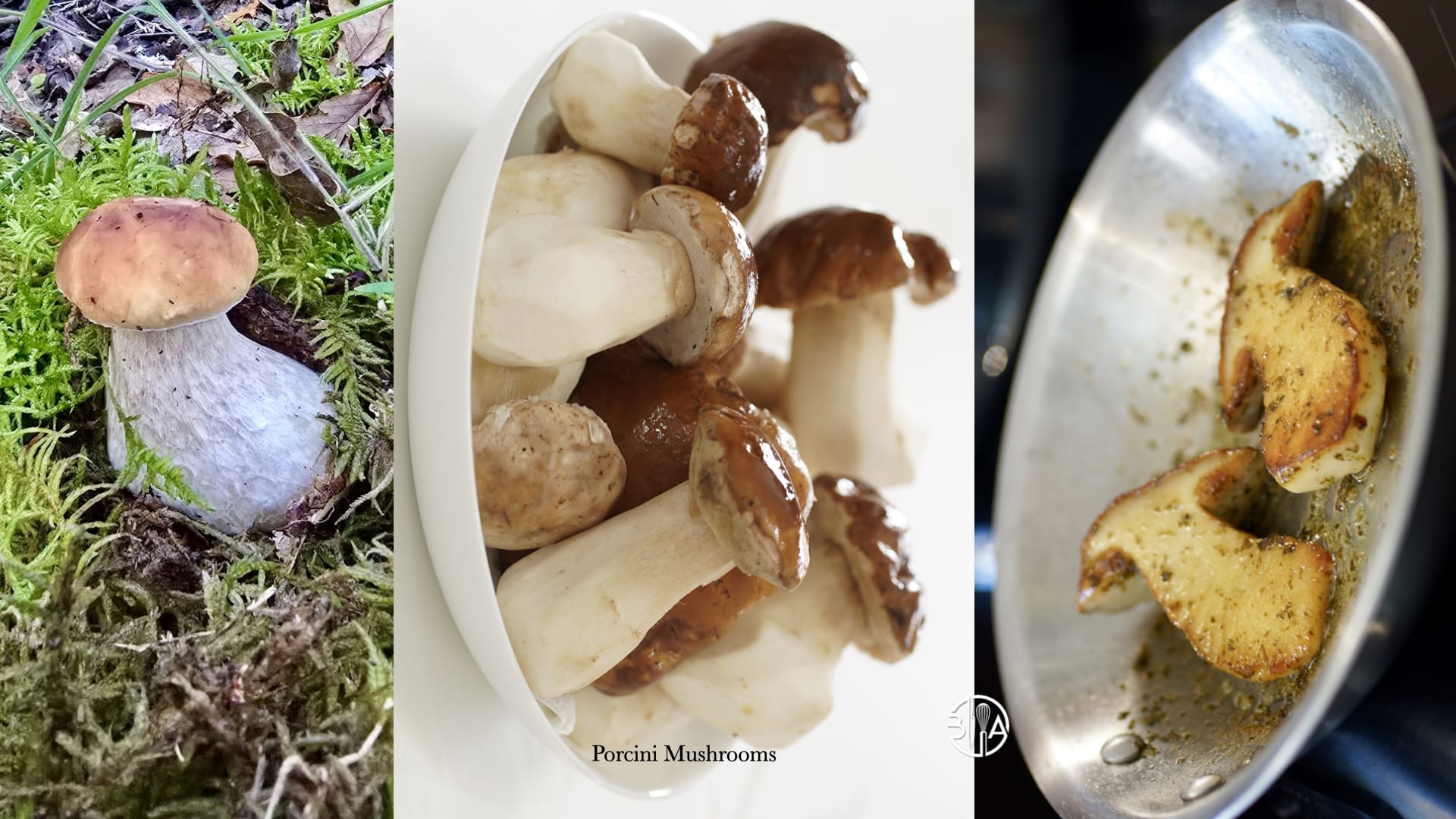Ingredients
Equipment
Method
Where To Find Porcini Mushrooms?
- Porcini mushrooms are prized fungi native to Europe and North America and have been spreading globally. They thrive in forests worldwide, including regions in North America, Europe, Asia, New Zealand, Australia, and South Africa. Porcinis form symbiotic relationships with specific trees, such as beeches, firs, spruces, oaks, and chestnuts. They flourish abundantly on forest floors, often in hilly and plain areas. The Landes Forest in the Aquitaine region of France is renowned for producing some of the tastiest porcini mushrooms. If you look at the mushrooming-calendar, most species come out in autumn around the end of September, and continue well into late November. Porcini mushrooms typically grow to about 5 centimeters (2 inches) tall, but their size can vary widely, ranging from as small as 2.5 centimeters (1 inch) to nearly 30 centimeters (a foot) in height. Their caps can also grow up to 30 centimeters across, with some porcinis weighing as much as 2 pounds (about a kilogram). These oversized mushrooms are nicknamed "forgotten porcinis." Despite their impressive size, larger porcinis are often wormy and spongy, making them less desirable. In contrast, younger and smaller porcinis are prized for their firmer texture and superior flavor.

How To Clean Porcini Mushrooms
- Start by using a sharp knife to trim off the base of the porcini mushroom stem. Gently peel off the outer layer of the foot to remove any remaining dirt and brown spots. To further clean the porcini, you can use a pastry brush to brush it off.

- Alternatively, you can quickly soak the mushrooms in a water bath or rinse them under running water. Just be sure to dry them thoroughly afterwards. You may need to separate the mushroom head from the stem; simply twist it and cut into desired shapes. Reserve in the refrigerator for up to 3 days.

How To Freeze Porcinis
- Place the chunks directly into the freezer for later use. Vacuum-Sealing Option: Spread the mushroom chunks on baking trays and freeze them. Once frozen, transfer the chunks into vacuum-sealed bags for optimal preservation. Store the frozen porcinis in the freezer for up to a year, ready for use in your favorite recipes.

How To Cook Frozen Porcinis
- Frozen porcini mushrooms tend to release more water during cooking due to their cell structure breaking down slightly during freezing. Heat up a large skillet, add fat and sautée frozen porcinis for 5 minutes on high heat. Drain if needed and put mushroom back to the pan. Add persillade and season with salt and pepper to taste. Continue to cook on high until light brown color. They can also be finished in the fan oven set at 430ºF/220ºC for 10 minutes or so.

Porcini Powder
- Porcini powder is a fantastic way to enhance the flavor of various dishes with its concentrated umami richness. Any dried mushroom can be ground into a fine powder using a spice grinder or food processor. This versatile ingredient can be added to preparations like mushroom duxelles, soups, risottos, sauces, or even as a seasoning rub for meats. It’s an easy way to amplify depth and complexity in your cooking. Mix dried mushrooms in a high powered blender, and pass through a sieve.

